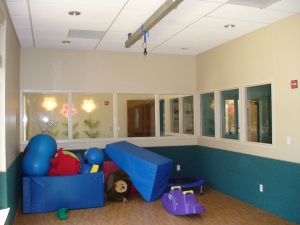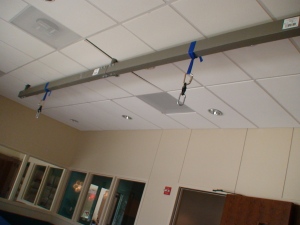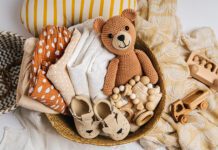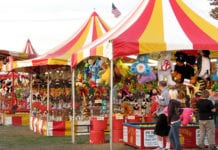Today’s post is the fifth in a series about my visit to Stonebriar Community Church’s Special Needs Ministry in Frisco, Texas. Meaghan Wall, the Special Needs Ministry Coordinator for Stonebriar, was kind enough to provide a tour of the church’s special needs suite. In today’s post we’ll talk about sensory room which functions as an inside playroom for the church’s special needs ministry suite. The other posts in this series have or will feature helpful information related to:
- Special Needs Ministry Entrance
- Check-in Board
- Main Classroom
- Quiet Room
- Bathroom (& Toileting/Diapering Policies)
- Storage Closet
- Family Picture Wall
- Outside Playground
*******************
The sensory room houses a number of toys to engage a child in gross motor play. The “pit” is filled with large blocks and vinyl covered soft foam pieces such as seen here or here. A small mini-trampoline is on hand for children who need a to work out some energy. Very often a child demonstrating “sensory seeking” behavior can be satisfied by a quick jump on the trampoline, returning to a calmer state after meeting his or her “sensory diet”.
This pictures shows a truss, which is a bar that was welded to the structure of the building in order to suspend sensory swings or other equipment commonly found in physical therapy environments. For churches that don’t have a bar like the one shown here, sturdy door mechanisms are available to suspend sensory swings. Sources for the swings and suspensions include:
- www.especialneeds.com
- www.southpawenterprises.com
- www.specialneedstoys.com (TFH USA)
Meaghan explained that the toys and tools selected for this room serve the purpose of creating a fun experience for the participating students and not necessarily to serve as an extension of therapy. While the room and its toys are utilized during every programming environment, the swings are especially helpful during FunZone Respite events.
This picture shows a small Rody toy (the blue horse). I’m a big fan of Rody toys. We have one at my house. These are great tools to provide children who have the fidgets, can’t sit still, and love to bounce. I often suggest keeping Rody Toys inside of typical children’s ministry classrooms and offering them to participants who have ADHD or who struggle with self regulation. Allowing a preschooler or even an older student the opportunity to perch (and bounce) on a Rody Toy during the Bible lesson may actually aid them in paying attention! (These could even be used instead of chairs.)
This picture also shows a red exercise ball (also referred to as a yoga ball). I love how the exercise ball is stored out of reach to students unless a caregiver or buddy working one-on-one with the child (such as shown here). These balls come in many sizes and sometimes with sensory textures as well. Target, Wal-Mart and most sporting good stores carry various sizes and colors of these balls. Meaghan noted that it is good to have several sizes on hand because of the varying sizes of the participating children. Stonebriar uses these balls often, sometimes bringing one into a hallway or a large group for a child to sit on during an activity. And a child can bounce on the ball, helping with the same issues noted above with the Rody Toy or below with the trampoline. Note: Therapy balls are wonderful sensory tools but can be dangerous if a child is playing on them without supervision (and the child accidentally rolls forward on their head).
 These two pictures show the flooring inside the sensory room. The black part of the floor is essentially a sub-flooring that might be used in a gym that is designed to absorb shock better than a concrete floor. (No I don’t know what company Stonebriar purchased this black flooring through, it was installed by the original builder. However you can Google “Shock Absorbing Floor System” and find a number of products and companies). Meaghan shared that while the black flooring provides a safer landing spot, it emits an unpleasant odor and is not particularly soft to the touch. To mask the smell and to provide a softer surface, Meaghan then found the wood-toned locking mats and just added them over the black flooring system. The puzzle mats are easily replaceable and don’t require a facilities manager or flooring company to actually cut and install replacement tiles (Meaghan just does it herself).
These two pictures show the flooring inside the sensory room. The black part of the floor is essentially a sub-flooring that might be used in a gym that is designed to absorb shock better than a concrete floor. (No I don’t know what company Stonebriar purchased this black flooring through, it was installed by the original builder. However you can Google “Shock Absorbing Floor System” and find a number of products and companies). Meaghan shared that while the black flooring provides a safer landing spot, it emits an unpleasant odor and is not particularly soft to the touch. To mask the smell and to provide a softer surface, Meaghan then found the wood-toned locking mats and just added them over the black flooring system. The puzzle mats are easily replaceable and don’t require a facilities manager or flooring company to actually cut and install replacement tiles (Meaghan just does it herself).
*******************
What ideas do you have? Does your church have toys or an indoor play area that works well for children with special needs? We’d love to know what works inside your church.
For more ideas on products for a special needs sensory room see the earlier blog post Products for the Special Needs Environment.














